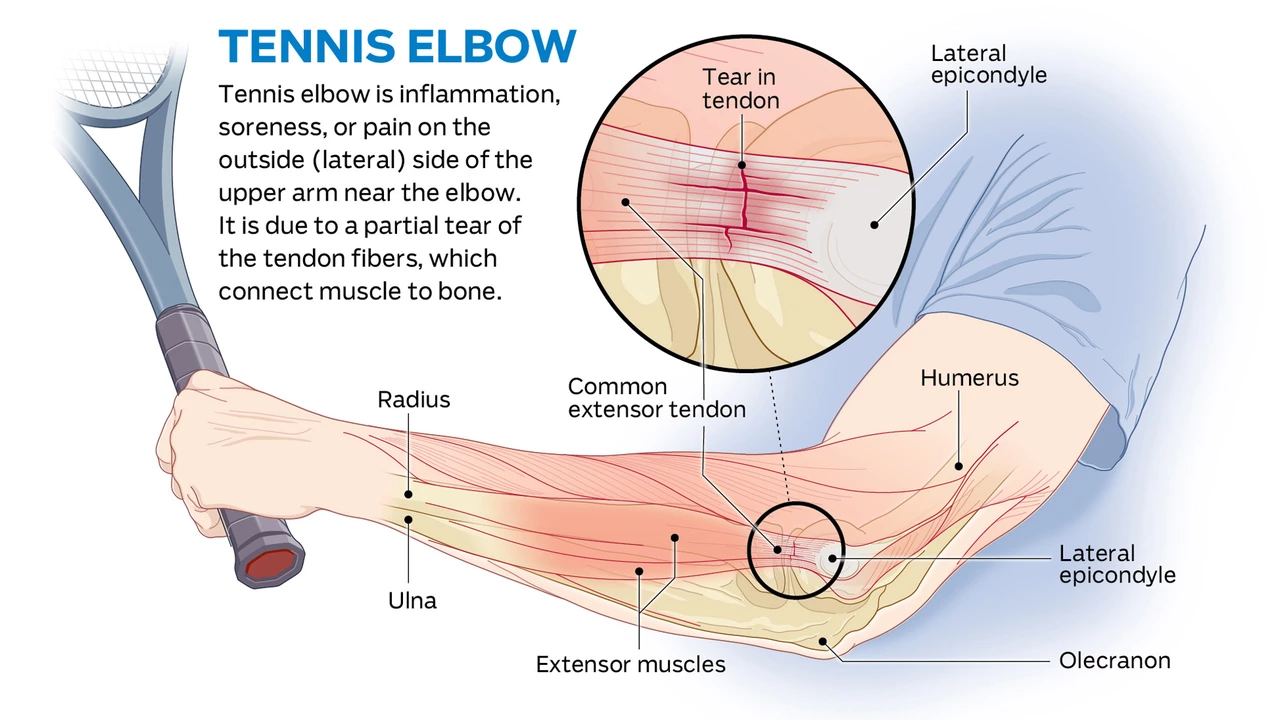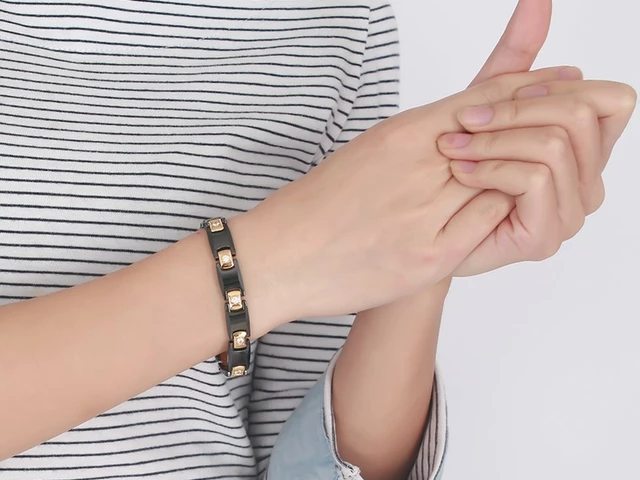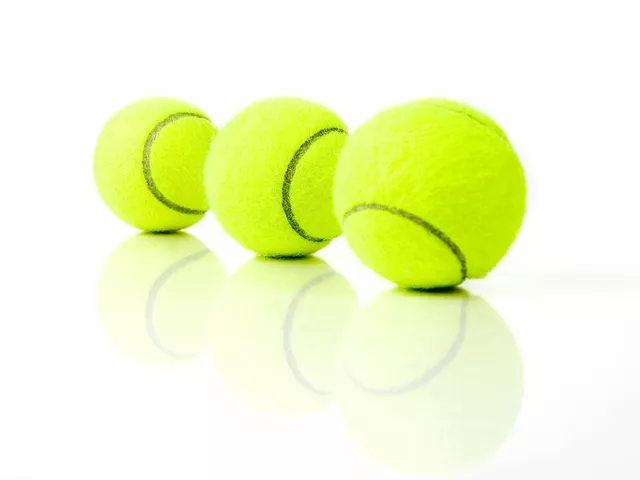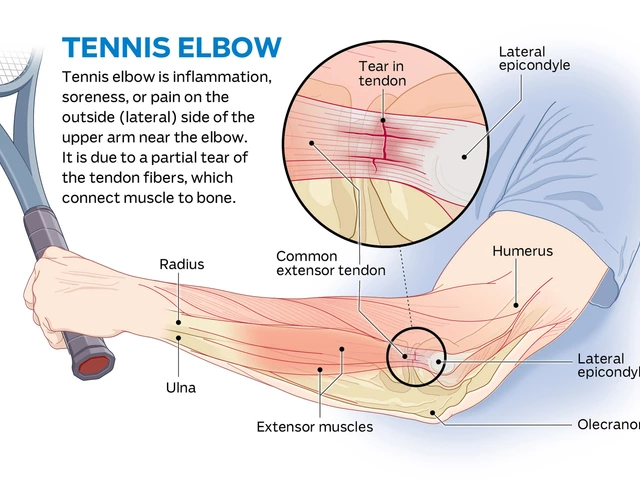Introduction to Tennis Elbow and Guitar Playing
For those of you not familiar with tennis elbow, allow me to bring you up to speed: it's not the exclusive domain of Wimbledon enthusiasts! Tennis elbow, or lateral epicondylitis for those who are into technical terms, is a quite common and irritating condition usually caused by repetitive motion, straining the muscles and tendons surrounding the elbow. Now you can probably see where I'm going with this. Yep, you got that right – us guitarists aren't immune to this curse, and in some cases our beloved instrument may be the origin of the problem.
If we really dive down the rabbit hole, research shows me that these repetitive motion injuries result from movements we do all the time as strummers and pluckers which put the elbow under constant pressure. But how does tennis elbow affect our guitar playing? Let's discuss, my fellow string aficionados.
The Pressure on the Strings and Its Effects
For those of you who have struggled with tennis elbow or fear it, you might ask, "Deacon, how does the pressure I put on the guitar's strings play into this?" Great question. The immense force we put into holding the strings is necessary for precise and beautiful sound. But, what we don't realize is that this leads to tension in our forearm muscles, resulting in pain around the elbow.
While mild discomfort might not be an issue, severe pain impairs the ability to play with the same level of skill. It affects not only our ability to hold down the strings firmly but also reduces our speed on the fretboard. The movement between various chords becomes harder and playing time reduces, robbing us the joy of creating beautiful music. Quite a bummer, I know.
Fighting Tennis Elbow through Correct Technique
One way to combat this problem is to use correct guitar playing technique. There is a common scene among beginners: you press the strings so hard that your knuckles turn white, the neck of the guitar is about to snap, and you're practically begging the guitar to play a decent note! Been there, done that. But, have you ever noticed how experienced guitarists seem to barely touch the strings and still produce elegant sounds? It's less about how hard you press, and more about where and how you press.
Techniques to help combat tennis elbow are all about minimizing tension. Try relaxing your wrist and fingers when playing the guitar, use your arm more to move your hand up and the down the neck of the guitar instead of just your wrist and fingers. These small changes can make a huge difference.
Physical Therapy as a Recovery Route
If the damage is done and the fear of guitar-induced tennis elbow has become a reality, physical therapy can be a viable option for remedying the pain. You're probably wondering, "But Deacon, does that mean I have to quit playing guitar temporarily?" - Well, yes and no. It doesn't necessarily imply quitting, but it does mean taking it easy and giving your elbow the time it needs to recover.
Physical therapy usually involves stretching and strengthening exercises targeting the forearm muscles, given by a certified therapist. These can gradually help manage the pain and restore mobility. Meanwhile, remember to give your guitar a little rest. I know it is hard, but your elbow will thank you!
The Magic of Regular Exercise
Regular exercise can be a magical preventative as well as a cooldown buddy after some stimulating guitar sessions. It can help condition your arms for improved stamina, flexibility, and resistance to injuries of all sorts, including tennis elbow.
Exercise regimes that focus on forearm strength and flexibility, overall body fitness, and breaks in between practice sessions can go a long way in ensuring your elbow remains in top shape, ready for rocking some epic tunes.
Equipment Adjustments for Easing the Strain
Have you considered how your guitar's gear might be contributing to the struggle? Your guitar's action (the distance between the strings and the fretboard) can either be a friend or foe in this situation. A high action requires more force to press down the strings, causing more strain on your elbow. You could consider lowering the action, to lessen the effort your fingers need to apply.
Consider also the thickness of your guitar pic. Using a thicker pick means it doesn't flex, requiring less effort from the thumb and fingers. Less effort equals less strain and reduces the risk of getting tennis elbow.
Oh, Popping the Medication Pill!
When addressing tennis elbow, medication can't be overlooked. They are not a permanent solution, but they can manage the pain. Your doctor may prescribe nonsteroidal anti-inflammatory drugs (NSAIDs), corticosteroid injections or even suggest platelet-rich plasma treatment for persistent cases.
Remember, it is essential to consult your doctor before starting any medication! As much as we desire a quick solution, there are downsides and side effects to consider with any form of medication.
Embracing the R.I.C.E. Approach
Lastly, welcoming the R.I.C.E (Rest, Ice, Compression, and Elevation) approach can make a world of difference. This method remains one of the most effective first aid treatments for just about any physical injury including our nemesis, tennis elbow. But be honest, how many of you tend to skip this? I raise my guilty hand too.
Consider incorporating R.I.C.E in your post-session cool-down routine. Take regular breaks, use ice packs post-practice, get a good compression sleeve, and elevate your arm whenever possible. These may sound like small steps but their impact on preventing tennis elbow is immense.
In conclusion, tennis elbow isn't a condition that we guitarists are doomed to suffer. Yes, it is an occupational hazard that comes with strumming the strings, but it also can be avoided and managed. So, my friends, let's promise to take better care of our elbows and keep them in good health because without them, we would be musicians without an instrument. Happy strumming!






